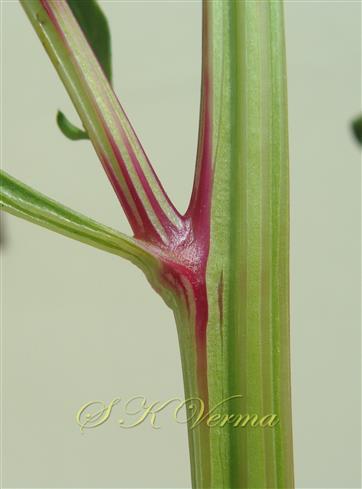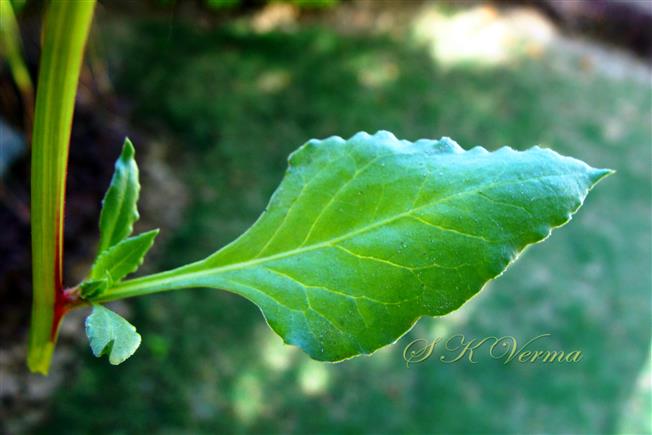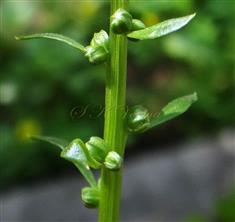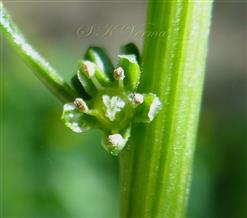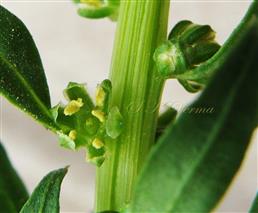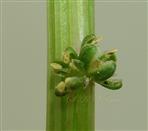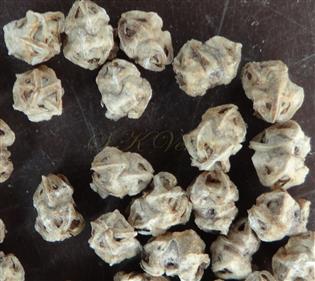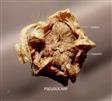BETA
Beta
L., Sp. Pl. 1: 222. 1753; Gen. Pl. 5: 103. 1754; Fl. China @ eFloras.org 5: 353; Shultz, Fl. North Amer. @ eFloras.org vol. 4: 266; Fl. Pak. @ eFloras.org Pakistan V. 204.
Annual, biennial or perennial herbs, often with fleshy, thickened roots, glabrous throughout. Stems prostrate, decumbent or erect, ribbed. Leaves alternate, petiolate or sessile; leaf blade ovate-cordate to rhombic-cuneate, margin +/- entire, apex obtuse. Flowers actinomorphic, bisexual, hypogynous, solitary or fascicled, axillary, arranged in spikes terminal on upper part of branches, fused at base and falling together at maturity of utricles; bracts small to abortive, herbaceous; bracteoles very small or abortive. Perianth urceolate, 5-parted, mostly herbaceous, connate and hardened at base; segments erect or 1-folded, longitudinally keeled abaxially. Stamens 5, inserted on the rim of glandular, perigynous disc; filaments subulate; anthers oblong. Carpels 3, syncarpous; ovary adherent at base to perianth, +/- trigonous; stigmas 2 or 3 (-5), papillate. Utricle (fruit) enclosed within perianth and connate by their swollen bases to form a pseudocarp which becomes detached at maturity. Seeds horizontal, lenticular, reniform, dark brown, glossy, perisperm copious.
10 species
Beta vulgaris subsp. vulgaris
Beta vulgaris subsp. vulgaris
; Beta vulgaris L. subsp. maritima (L.) Arcang., Comp. Fl. Ital. 593. 1882; Fl. North Amer. @ eFloras.org vol. 4: 266-267; Beta bengalensis Roxb., Fl. Ind. ed. 2: 59. 1832; B. maritima L., Sp. Pl., ed. 2,1: 322. 1762.
Annual to perennial herb. Roots brown, fibrous, sometimes nodulated or swollen and woody, not fleshy. Stems often erect, simple or branched, up to 80 cm tall, ribbed, green and reddish-purple, glabrous. Leaves basal and cauline, glabrous. Basal leaves long petiolate; petiole stout, abaxially convex, adaxially flattened or slightly concave; leaf blade rhombic, oblong, up to 20 cm x 10 cm, sometimes even more, base cuneate, truncate or slightly cordate, margin entire or undulate, apex obtuse. Cauline leaves alternate, gradually smaller towards apex, ovate or oblong-lanceolate, base gradually attenuated into petiole, apex acute or attenuate. Flowers actinomorphic, bisexual, hypogynous, solitary or in fascicles of 2-3, arranged in long, slender, +/- interrupted spikes, usually with smaller subtending leaves (bracts). Bracteoles abortive; flowers fused at base and falling together at maturity of utricles. Perianth 2-5 mm long and across, herbaceous; tepals 5, connate at base, narrowly oblong, green with white membranous margin, indurate below, usually incurved and +/- keeled. Stamens 5, nearly equal to perianth; filaments subulate; anthers oblong. Carpels 3, syncarpous; ovary adherent at base to perianth, +/- trigonous; style absent; stigmas 3. Utricle enclosed within perianth and connate by their swollen bases to form pseudocarp. Pseudocarps up to 5 mm in diameter, usually in a group of 2 or 3 and fall as a unit. Seeds red brown, lenticular, 2-3 mm in diameter.
Common Names: Indian Spinach, Savoy Beet, Spinach Beet, Sea Beet; Palak, Palangsag, Palanki (Hindi)

